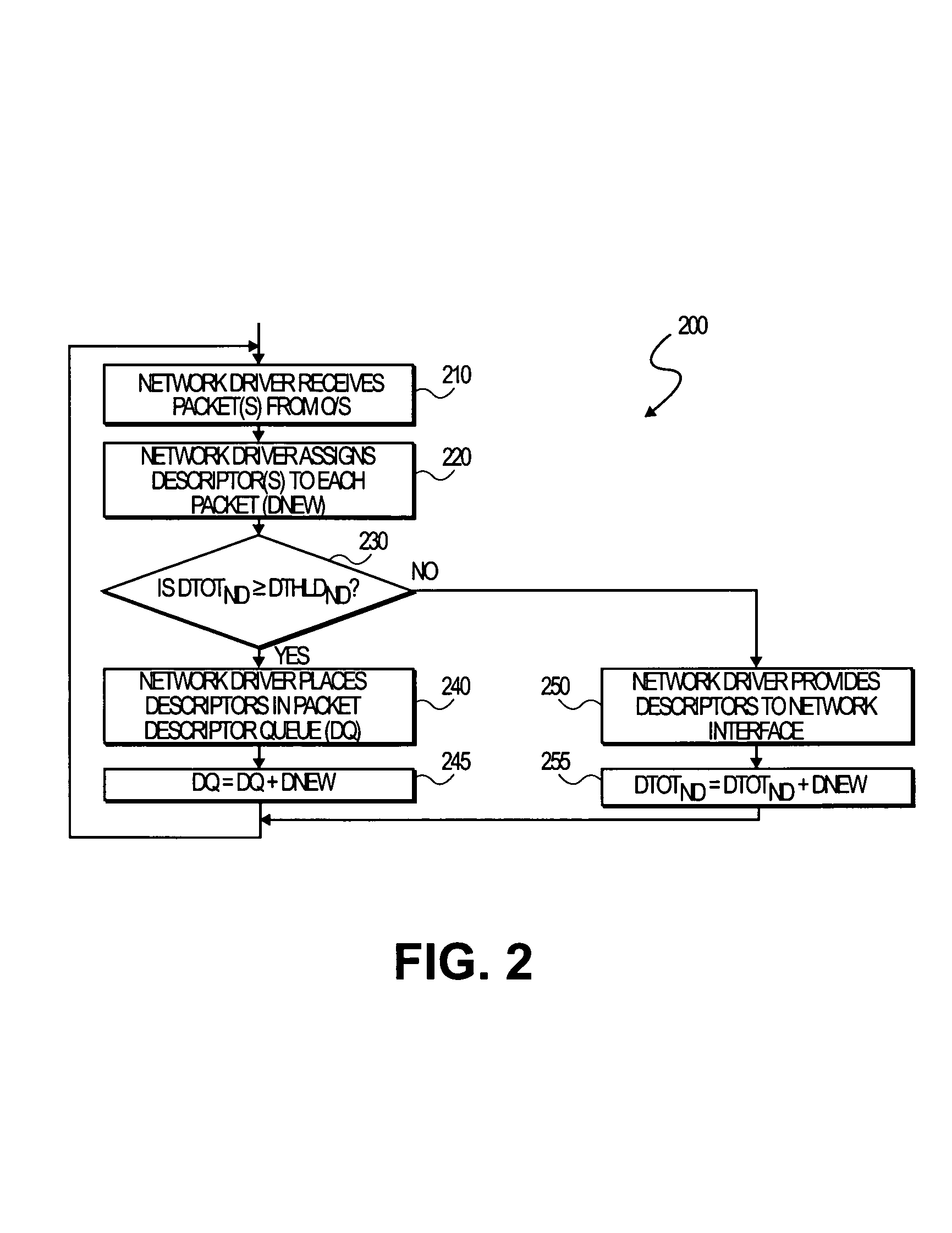Apparatus and method for just-in-time transfer of transmit commands to a network interface
a network interface and just-in-time technology, applied in the field of network communication, can solve the problems of packet latency, inefficient use of bus, and inhibiting the use of burst data transactions, so as to achieve the maximum throughput of the bus, and achieve the effect of packet latency
- Summary
- Abstract
- Description
- Claims
- Application Information
AI Technical Summary
Problems solved by technology
Method used
Image
Examples
Embodiment Construction
[0013]Embodiments of an apparatus and method for the just-in-time transfer of transmit commands to a network interface are disclosed in FIGS. 1 though 5 and the accompanying text. For clarity and ease of understanding, these embodiments are presented below in the context of a specific type of transmit command—i.e., a descriptor. It should be understood, however, that the embodiments disclosed herein are not limited to the use of descriptors and, further, that these embodiments may be practiced with any type of transmit command or other command. It should be further understood that, although the present invention is described in the context of a network interface, the present invention is generally applicable to any type of I / O controller.
[0014]Referring to FIG. 1, a system 100 includes a bus 110 having a processor 120 coupled therewith. The processor 120 may comprise any microprocessor, ASIC (application specific integrated circuit), or other suitable processing device. A read-only ...
PUM
 Login to View More
Login to View More Abstract
Description
Claims
Application Information
 Login to View More
Login to View More - R&D
- Intellectual Property
- Life Sciences
- Materials
- Tech Scout
- Unparalleled Data Quality
- Higher Quality Content
- 60% Fewer Hallucinations
Browse by: Latest US Patents, China's latest patents, Technical Efficacy Thesaurus, Application Domain, Technology Topic, Popular Technical Reports.
© 2025 PatSnap. All rights reserved.Legal|Privacy policy|Modern Slavery Act Transparency Statement|Sitemap|About US| Contact US: help@patsnap.com



